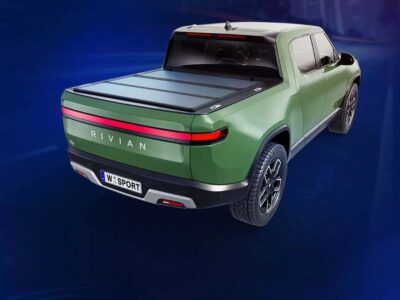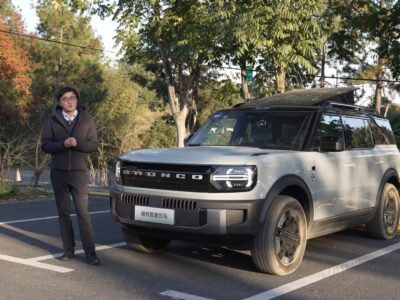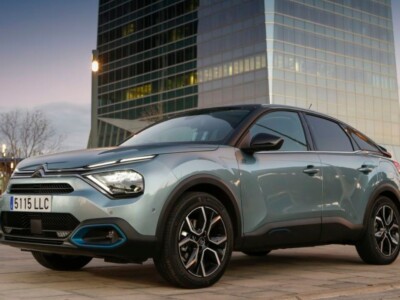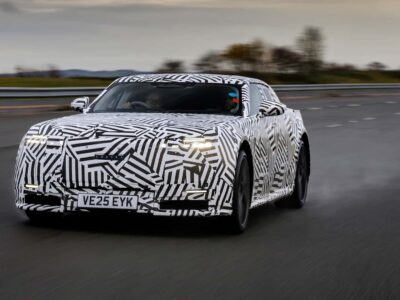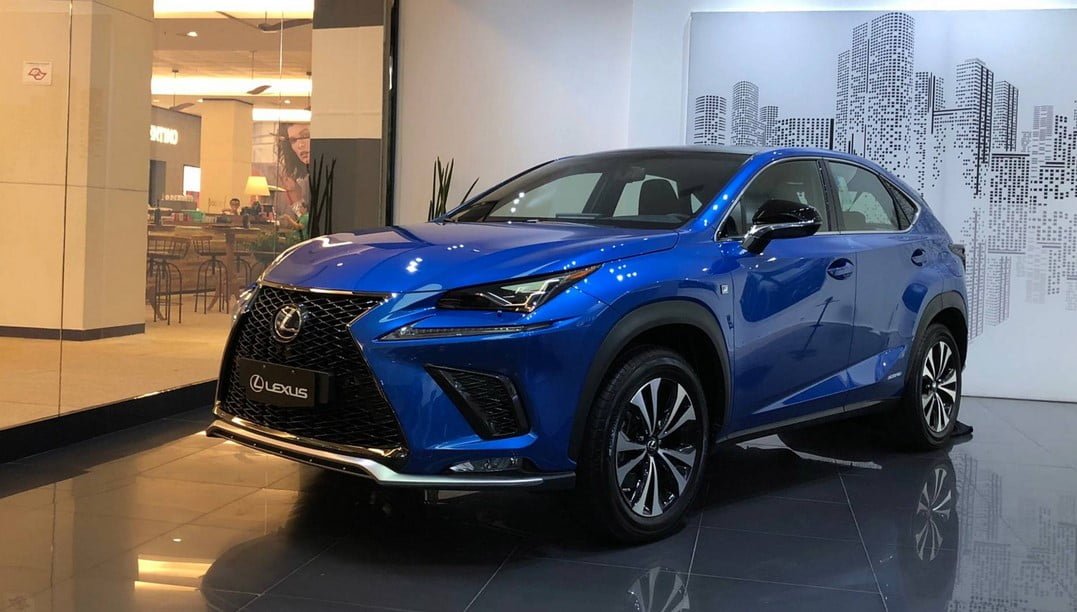
Lexus was one of the first premium brands to adopt electrified powertrains in 2005, but the company has resisted building a full plug-in hybrid. That changes now with the new Lexus NX, which will become the first PHEV from the Japanese brand when it goes on sale in the last quarter of 2021.
The NX has been a crucial model for Lexus since its launch in 2014. Over 170,000 units have been sold in Europe so far, with the majority going to new customers to the Lexus brand.
The styling of the completely new model is an evolution of what happened before; as Spiros Fortinos, Director of Lexus Europe and Electric Vehicle Planning, says, “it is unmistakably an NX.” There’s the distinctive Lexus grille at the front, some complex side surfaces, including a notable ‘kick’ up near the C-pillar, and a neater arrangement of the taillights that features a slim ‘wrap-around’ signature on the rear body. The latter of these elements is expected to be adopted in a larger part of the Lexus range in the future.
The second-generation NX is based on TNGA-K, Toyota’s modular platform version dedicated to larger vehicles, such as the Toyota RAV4. The new Lexus is larger in all aspects than the car it replaces: 20 mm longer, 20 mm wider, and five millimeters taller. The more efficient packaging of TNGA means its wheelbase is also 30 mm longer, a development that should improve rear cabin space. The total length is now 4,660 mm, making this car two centimeters shorter than an Audi Q5 but six centimeters longer than the RAV4.
The NX’s fundamentals are almost entirely new; only five percent of the entire vehicle dates back to its predecessor. The suspension setup is the standard TNGA-K fare, with MacPherson struts at the front and a double-wishbone design with trailing arms at the rear.
The plug-in hybrid borrows much technology from its Toyota sibling, blending a 2.5-liter four-cylinder gasoline engine with an electric motor for an identical total power of 302bhp. In most situations, the car operates by default as what Lexus calls an “auto-charging hybrid,” indeed the same type of setup that was previously offered in the NX. But there’s also an 18.1kWh battery on board, and when fully charged, it’s capable of taking the car up to 40 miles on electricity alone, at speeds of up to 84 mph.
Official efficiency figures have not been released yet, but Lexus says it expects the NX 450h+, as the PHEV will be known, to generate CO2 emissions of less than 40 g/km.
The ‘conventional’ model will still be called NX 350h, although its mechanical composition has also been revised. The fourth-generation hybrid system is also based on a 2.5-liter four-cylinder gasoline engine and produces 239 hp (a gain of over 20 percent from the previous car) for a 0 to 100 km/h time of 7.7 seconds. The 350h will continue to be offered with a front-wheel-drive or all-wheel-drive option, and the towing capacity of the front-wheel-drive edition has been increased to match the all-wheel-drive version, at 1,500 kg.
Lexus says it expects CO2 emissions to fall by around 10 percent compared to the previous model, giving the front-wheel-drive model a figure of around 145 g/km.
There is no purely electric version of the car at launch, but when asked if Lexus could add such a variant at a later date, similar to its approach with the smaller UX, the company’s Brand Management Head, Hiroo Togashi, hinted that this could happen by saying, “The new NX will not have a BEV [pure-electric version] at the start of sales.” NX Chief Engineer, Takeato Kato, confirmed that there is no technical reason why the NX cannot be offered in purely electric form.
Interestingly, Lexus plans to introduce a single-motor front-engine version of the plug-in NX, badged as NX 400h+, in China.
The cabin possibly takes a more radical approach than the exterior, with a total overhaul of Lexus’ much-criticized infotainment systems. The standard setup, called Lexus Link Connect, features a 9.8-inch anti-glare touchscreen with increased processing power to deliver responses over three times faster than before.
The flagship system will be Lexus Link Pro, which brings a massive 14-inch high-definition screen that is one of the largest offered in the NX class. Wireless Apple CarPlay and wired Android Auto are supported, and the NX features four USB ports (three of them USB-C), split between front and rear cabins.
A smartphone app, Lexus Link, will allow NX owners to lock and unlock their vehicle remotely and control cabin temperature pre-conditioning. In the 450h+, owners will also be able to monitor and schedule charging.
Regardless of which system is installed, Lexus’ controversial touchpad infotainment controller has been removed, at least partly due to the interface requirements of Apple and Android integration. Kato said the company expects all future Lexus models to feature a touchscreen and voice commands only.
Nothing is known yet about specific equipment levels and prices, but Lexus Europe’s Vice President of Value Chain, Pascal Ruch, said customers should expect “continuity” in this area. That likely means only a very modest increase for the NX 350h.


